THE “WEIRFIELD” HOUSE ON THE HILL (1850)
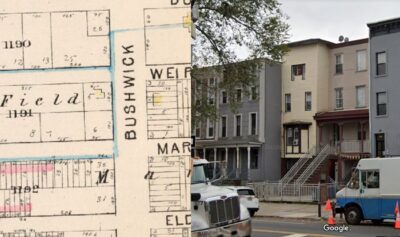
******************************************************************************************************************************** Brownstone Detectives investigates the history of our clients’ homes. The story you are about to read was composed from research conducted in the course of one of those investigations. Do you know the history of YOUR house? ******************************************************************************************************************************** If Bushwick Avenue were a family, it would likely be an entertainingly and curiously dysfunctional clan. It would maybe be something akin to that harmless uncle who comes to Thanksgiving dinner, doesn’t talk about politics, but engages in witty banter and sips a few too many vermouths. Some houses on the avenue present as mindlessly conforming rowhouses — lined up at attention like toy soldiers. Squeezed within some of those rows, however, we sometimes find structures that seem oh-so-slightly out-of-place – as though they were built in – and transported from – another time and galaxy. One such structure is a 172-year-old house that appears as though it should be sitting alone upon a hill with a view to unfolding valleys of pastureland. THE HOUSE ON THE HILL In the mid-1800s, No. 1250 Bushwick Avenue was the only house on the south side of Bushwick Avenue between Weirfield and Margaretta (Halsey) Streets. The house was erected in approximately 1850 and, in its day of glory, stood on a knoll about six feet above street level, flanked on either side by immense maple trees. The grounds sloped gently down to a stone wall, five feet above the grade of the street, which extended along the street frontage from Weirfield street to Margaretta […]
BROOKLYN & THE “JUMPING SELFIE” (1886)
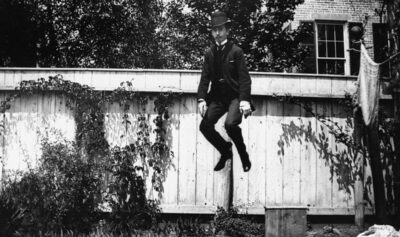
******************************************************************************************************************************** Brownstone Detectives investigates the history of our clients’ homes. The story you are about to read was composed from research conducted in the course of one of those investigations. Do you know the history of YOUR house? ******************************************************************************************************************************** In 1886, there was a LOT of jumping on Livingston Street. That year, a man by the name of Wallace G. Levison, an amateur photographer who lived on the street with his family, was testing a new type of film along with its ability to capture subjects in the process of motion. As the dawn of the 20th century approached, newer, more sensitive film emulsions were being developed that allowed pictures to be taken with faster and faster shutter speeds. Levison was set on experimenting with them. An avid photographer, he used the new technology both as a scientific tool and a recreational activity. In addition to being an amateur photographer, Levison was a chemist, inventor, and lecturer who founded the Departments of Mineralogy and Astronomy at the Brooklyn Institute of Arts and Sciences in the latter half of the 19th century. He may have also invented the concept of the “jumping selfie.” ORGANIZING SHUTTERBUGS Born at 1435 Pacific Street, Brooklyn (where – except for the 1880s-1900s – he would live for most of his life) in 1846, Levison attended Cooper Union, New York City’s prestigious free school for the sciences and arts, and graduated with a BS from Harvard in 1870. He was a member of the New York Mineralogical […]
SACRIFICED TO A FEED A BRIDGE (1907)
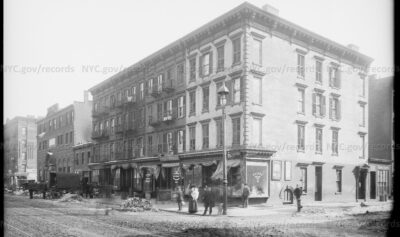
********************************************************************************************************************************Brownstone Detectives investigates the history of our clients’ homes.The story you are about to read was composed from research conducted in the course of one of those investigations.Do you know the history of YOUR house?******************************************************************************************************************************** Most New Yorkers know it when they see it – the Manhattan entrance to the Queensborough Bridge. It’s congested with vehicles, cars, and pedestrians – all just trying to get onto the bridge or around it. Most people, though, don’t know what this area looked like before the bridge was built. In 1907, fortunately for us, someone went around and took pictures of the rows of buildings – mostly wooden – that were doomed to the woodpile, soon to be sacrificed to feed that bridge. In these pictures, you will see life continuing to go on around these buildings. If you look closely, though, you will see something rarely seen in old pictures of New York City life – everyone is preparing for the end. Moving vans abound. Sales are announced. You can even see it in the faces of the subjects: “There is not much time before this is all gone…” To the feint of heart, everything you are about to see – is no more… These are those pics: To see these pictures in their glorious hi-res detail, check out this part of the New York City Department of Records Photographic Collection by clicking HERE. Follow @BrownstoneDetec Share ———————————————————————————————————————– The Brownstone Detectives Brownstone Detectives is an historic property research agency. Our mission is […]
SNUFFED OUT IN A BOWERY WINE CELLAR (1917)
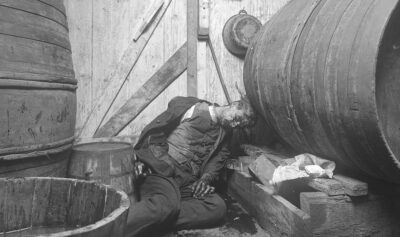
******************************************************************************************************************************** Brownstone Detectives investigates the history of our clients’ homes. The story you are about to read was composed from research conducted in the course of one of those investigations. Do you know the history of YOUR house? ******************************************************************************************************************************** When we discovered a set of NYPD archive photographs showing the aftermath of a murder in the wine cellar of a Bowery tenement, it came attached with just a street address as a clue. Armed with this information, we started our investigation, tracking down the story of the murder from newspaper archives. We present that story – and these original pictures – to you today. This brief story details exactly what allegedly happened and how the subject came to be discovered murdered in his wine cellar. The story is from the New York Tribune of Friday, 19 January 1917. – The Brownstone Detectives “The telephone bell in Dominick Bononeolo’s undertaker’s shop, at 294 Elizabeth Street, rang at 7:30 last night. The undertaker himself responded in his soothing tones. “‘Go down cellar,’ commanded a harsh masculine voice, ‘and see that everything is well with Dominick.’ “The undertaker tried to explain that an hour before he had seen Dominick Maestropaolo descend into his wine cellar beneath the undertaker’s shop and that he had seemed in the best of health. The telephone had gone dead, however, except for central’s thin query. “Bononeolo’s son, Giuseppe, who is about twenty year old, went down. One of the iron doors was open. A flickering gas flame set […]
STEP INSIDE A ’70s BROOKLYN BROWNSTONE
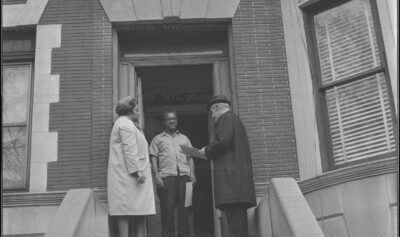
******************************************************************************************************************************** Brownstone Detectives investigates the history of our clients’ homes. The story you are about to read was composed from research conducted in the course of one of those investigations. Do you know the history of YOUR house? ******************************************************************************************************************************** In 1970, officials with the New York City Housing and Development Administration (HDA) paid a visit to the owner of No. 23 Virginia Place in Crown Heights. The reason for the visit was assisting citizens with the rehabbing of their homes. The city wanted to get some great shots of their beureuacrats helping everyday folks, and so they took a photographer along with them to show them doing hust that. As a result of the public affairs shoot, we have today some great images of what No. 23 Virginia Place looked lie in 1970. Enjoy! Follow @BrownstoneDetec Share ———————————————————————————————————————– The Brownstone Detectives Brownstone Detectives is an historic property research agency. Our mission is to document and save the histories of our clients’ homes. From our research, we produce our celebrated House History Books and House History Reports. Contact us today to begin discovering the history of your home.
“CINDERELLA OF BERKELEY PLACE” (1971)
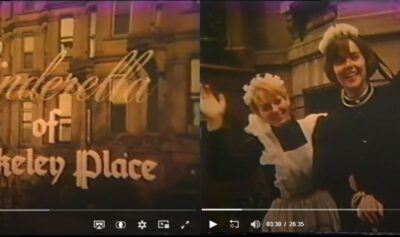
******************************************************************************************************************************** Brownstone Detectives investigates the history of our clients’ homes. The story you are about to read was composed from research conducted in the course of one of those investigations. Do you know the history of YOUR house? ******************************************************************************************************************************** It showed how a brownstone, nicknamed “Cinderella,” in the slums of Park Slope, was about to go through a full-scale renovation. To be sure, the brownstone, No. 211 Berkeley Place, was in truly rough shape – but it had “good bones;” clearly, however, it was the worst house in the best bad neighborhood – and it needed a LOT of work. The brownstone was not being renovated by a couple of young brownstoners, however; it was purchased for renovation by the Brooklyn Union Gas Company, at the behest of local activists. The plan was to show the ease with which brownstones could be renovated with few resources and not a lot of money, allowing owners to live in their own grand brownstones in America’s first suburb. THE ACTIVISTS Everett H. and Evelyn G. Ortner galvanized the historic preservation movement in Brooklyn. In 1963, after living in Brooklyn Heights for the first decade of their marriage, the couple purchased an 1882 four-story brownstone at No. 272 Berkeley Place in the Park Slope neighborhood of Brooklyn. This would be the catalyst for their involvement in the “Brownstone Revival” movement. The Ortners soon became active in a variety of community organizations. They lobbied local banks to provide mortgages to prospective Park Slope home-buyers at […]